
Celine and Don Woznica arriving at the Cathedral of Santiago de Compostela after walking the Camino for 500 miles.
By Celine Woznica
We arrived in Santiago on Monday, Sept 23, walking into the cathedral plaza around noon and joining about 1,500 pilgrims who arrive daily from the many Caminos that dot Europe. We walked the French route, which is the most popular. It was an emotional experience mixed with a sense of joy, relief, and awe. We made it! Five hundred miles walked! Like all pilgrims, we took our photo in front of the cathedral. But arriving in Santiago is only part of the Camino. It is so much more than the miles we walked.
We spent a lot of time reflecting on the Camino experience as we spent the next four days in Santiago catching up with friends, sharing stories, and watching the other pilgrims arrive into the plaza. We then traveled to Finisterre on the coast which the Romans thought was “the end of the world,” and many consider it the end of their Camino. That afforded more time to reflect.
What makes the Camino such an incredible experience that people of all ages, from more than 200 countries, and of widely diverse spiritualities choose to walk it, often multiple times?
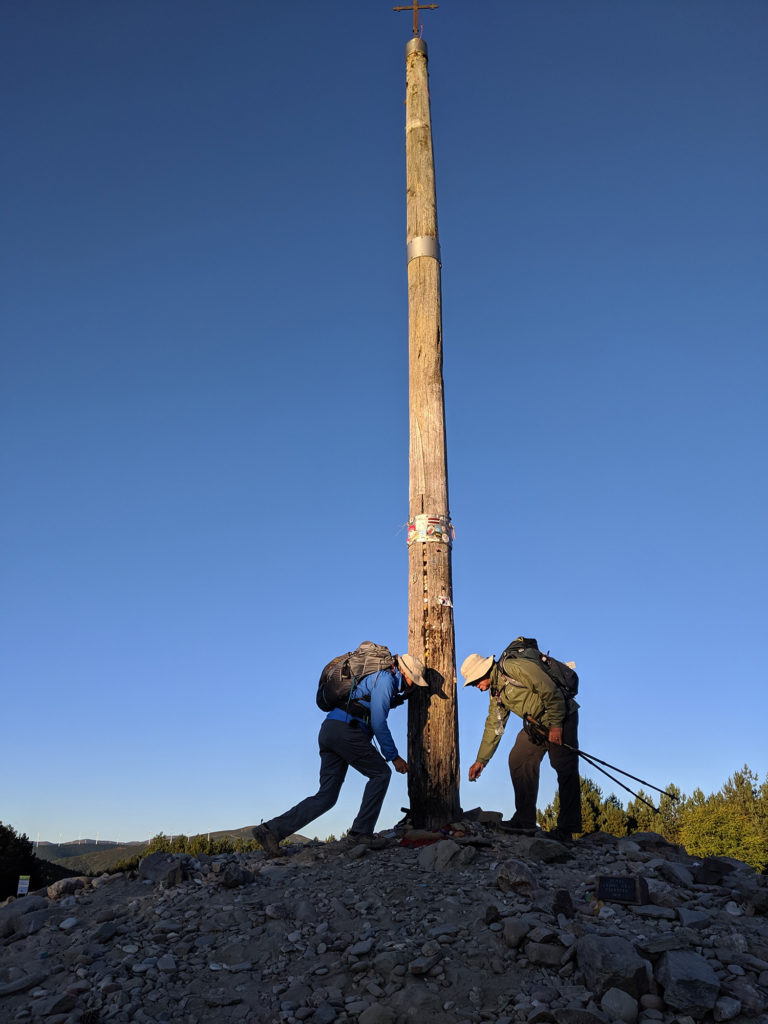
At the Cruz de Fierro where traditionally pilgrims leave a stone they have brought from home and upon which they have written the burdens they want to leave on the Camino.
The Camino is a walking retreat that takes one through stunningly beautiful landscapes, but also through scenes of everyday 21st century life. It is a mix of the ordinary and the extraordinary. For 37 days we walked, creating a time and space that connected the earthly with the sacred. We walked six to eight hours a day. All we did was walk! We didn’t have to figure out where to go because the Camino is well-marked with sign posts and yellow arrows. It was within this time and space that we were able to contemplate the majesty of nature and the enormous capacity of the human spirit.
The Camino creates a peaceful and loving dynamic involving the pilgrim, the larger community, and the long path. Many times we stopped and declared what we just witnessed as sacred. What were some of these sacred moments? Definitely the fields of sunflowers, the mists in the mountains, and the many other breathtaking scenes of nature. And of course the “Camino Angels,” local people who put out light refreshments for the pilgrims, and some of our fellow pilgrims who are often Camino Angels as well.
One fellow pilgrim told us about a group he met of wounded U.S. veterans walking with a psychologist and a priest (“Warriors on The Way”). They were stopped because a special screw and grommet had fallen out of a veteran’s leg prosthesis and he could no longer continue. The organizers were trying to figure out how to get him to the next town. As they were reviewing options, another pilgrim approached. When she found out what had happened, she told them that she had seen that screw on the Camino and offered to walk all the way back to look for it. And she did. She took the time to retrace her steps, looked around until she found both the screw and the grommet, and brought them back to the veteran so he could continue walking.
This is just one of many, many stories of assistance rendered to others on the Camino. We live in such a transactional society that these selfless acts of kindness towards perfect strangers leave a deep impression. One feels embraced in a blanket of love.
Another example of the generosity of the human spirit is a scene I witnessed in the cathedral plaza. A team of French pilgrims in matching red shirts arrived, pulling two specially adapted wheelchairs. They had made it possible for two women living with a disability to traverse the Camino!
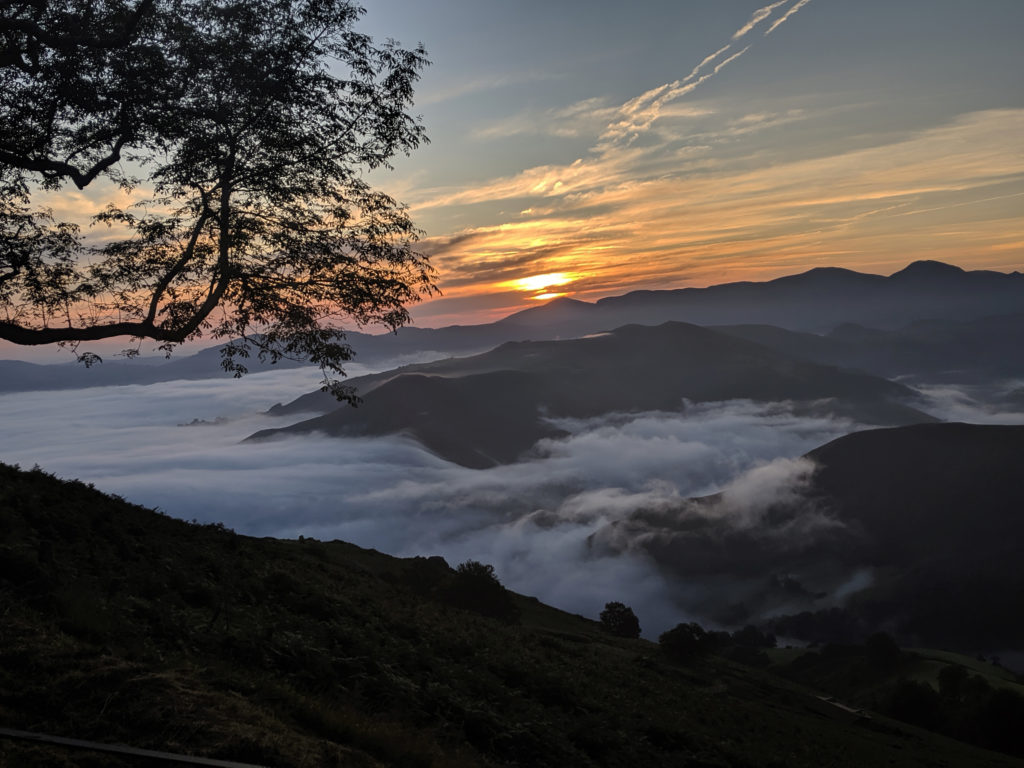 There’s what humans can do for each other, and also what humans can achieve on their own through grit and determination. Pilgrim friends had told us about Russell and Lois, an older blind couple from Baton Rouge who were walking the Camino without any assistance except an audio GPS. No guide dog, no sighted companions! We were incredulous. How did they navigate the rocky steep hills and the slippery downhills of uneven shale? Apparently if they had advance notice of a treacherous section they would walk on the road. Makes what we did look like a cake walk. Later in Santiago I saw an older blind couple walking down the street towards the pilgrim office to get their Compostela. I snapped a photo and sent it to my friend. Yes indeed it was Russell and Lois. They made it!
There’s what humans can do for each other, and also what humans can achieve on their own through grit and determination. Pilgrim friends had told us about Russell and Lois, an older blind couple from Baton Rouge who were walking the Camino without any assistance except an audio GPS. No guide dog, no sighted companions! We were incredulous. How did they navigate the rocky steep hills and the slippery downhills of uneven shale? Apparently if they had advance notice of a treacherous section they would walk on the road. Makes what we did look like a cake walk. Later in Santiago I saw an older blind couple walking down the street towards the pilgrim office to get their Compostela. I snapped a photo and sent it to my friend. Yes indeed it was Russell and Lois. They made it!
I stated at the onset that I did not have a specific motive or goal in walking the Camino, but that I began the journey with an empty cup. And yes, it was filled to overflowing—with gratitude and awe. As my cup filled, my “backpack” emptied of that which I needed to shed, that which weighed me down and held me back. Yes, the experience was transformative. There is a reason why almost all cultures celebrate pilgrimages as a means of relating to the sacred and exploring the transcendental beliefs that make up our spiritual dimension.
So now what happens? Where do we go from here? What will we do when we get home? Well, we will be home next week and I will have to jump right back into teaching and the other activities that I have put on hold, not to mention time with family, especially grandchildren. How can we make the Camino our life and our life a Camino?
It is said that your Camino begins when you arrive home. In fact, the exit portal of the Santiago Cathedral (built in the 13th century) has the Greek letters Alpha and Omega reversed. The Omega (end) is first, meaning that your journey has ended, and the Alpha (beginning) is last, meaning that your actual Camino is just starting.
I don’t know what form our nascent Camino will take, but I know that it will be fortified with lessons learned from this journey. Honor the gifts of time and space. Contemplate the wonders of nature and the better angels of our human spirit. Maintain an open mind, an open heart, and an open door. Let go of that which holds you back. Live in the present. We are human beings, not human doings.
Peace to all! Love,
Celine
Returned Maryknoll lay missioners Celine and Don Woznica (Class of 1981) served in Nicaragua and Oaxaca, Mexico. They live in Oak Park, Illinois, and are active members of the Chicago chapter of Maryknoll Affiliates.
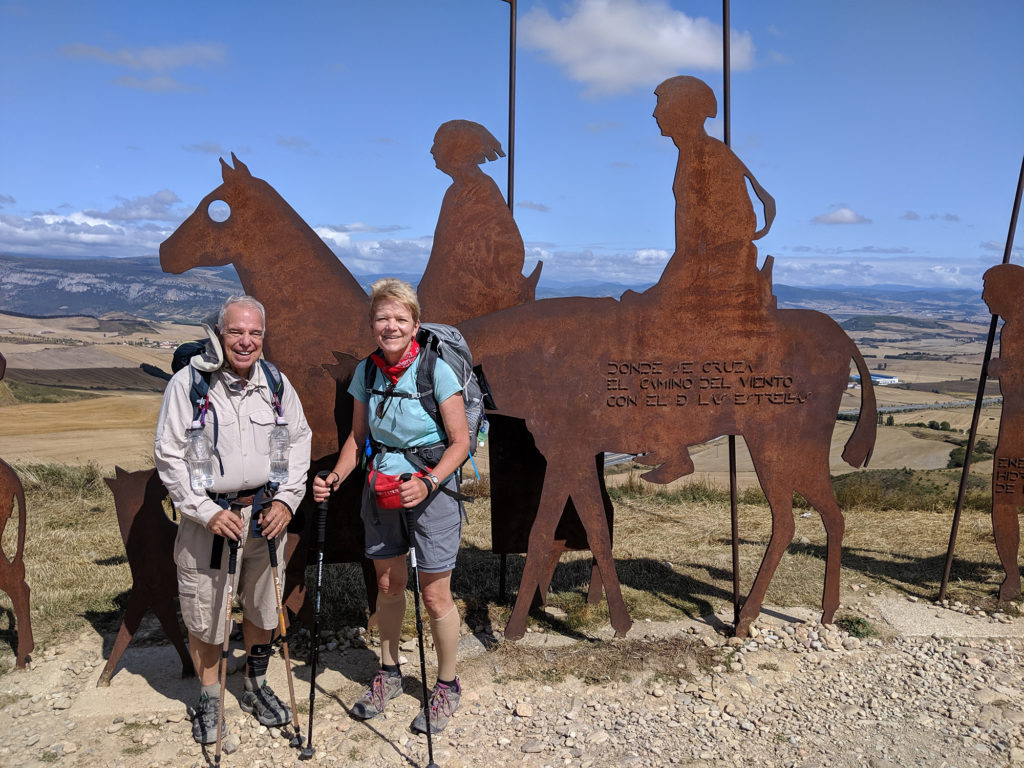
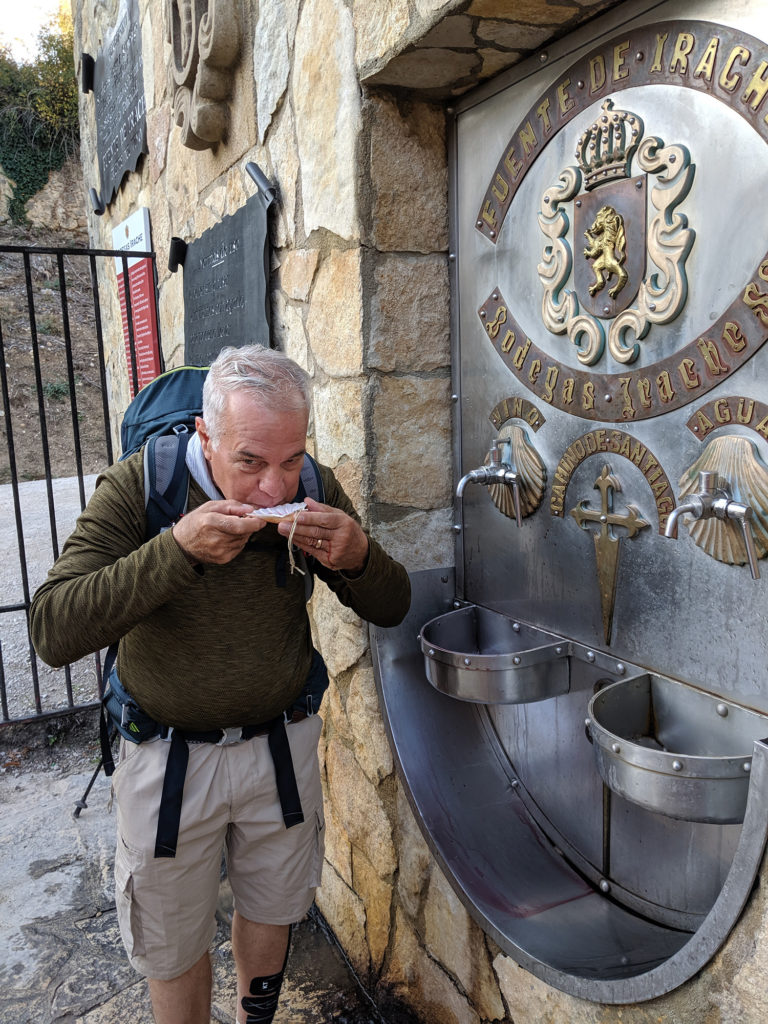

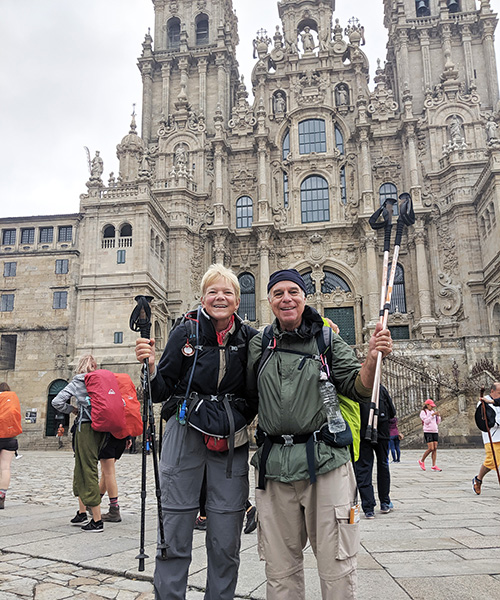

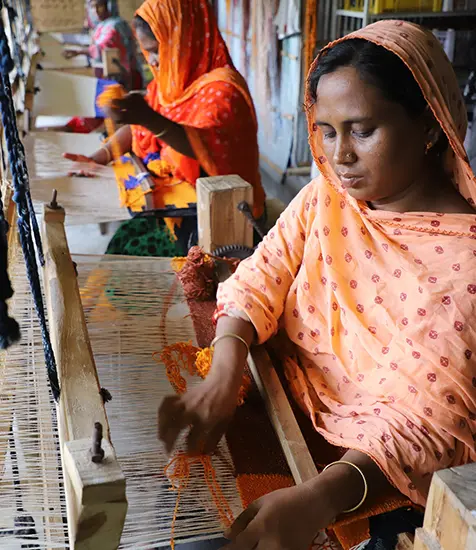
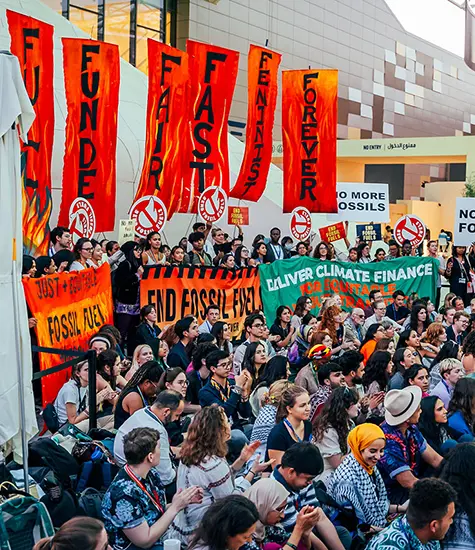
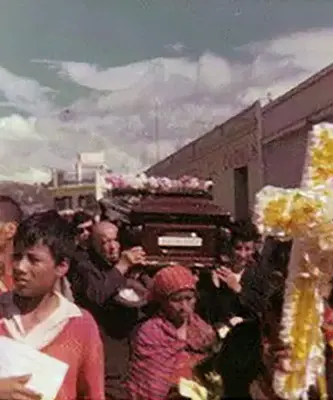




Thank you for sharing your Camino experience. It really inspires me! I have been looking into it and am planning for it. I pray and hope that it will also be a transformative experience for me.! I am in awe that you’ve walked 500 miles! wow! and a blind couple to complete the Camino? God bless them and bless each pilgrim as they make their journey! I pray that the fruit of your Camino journey will continue the rest of your life!